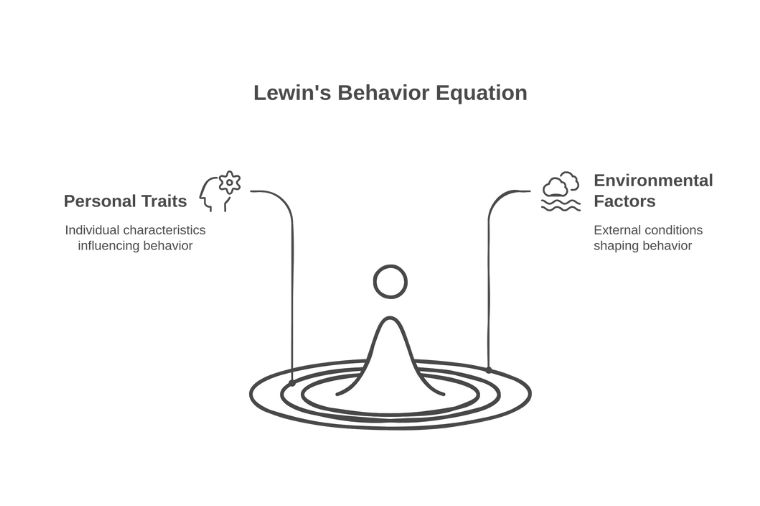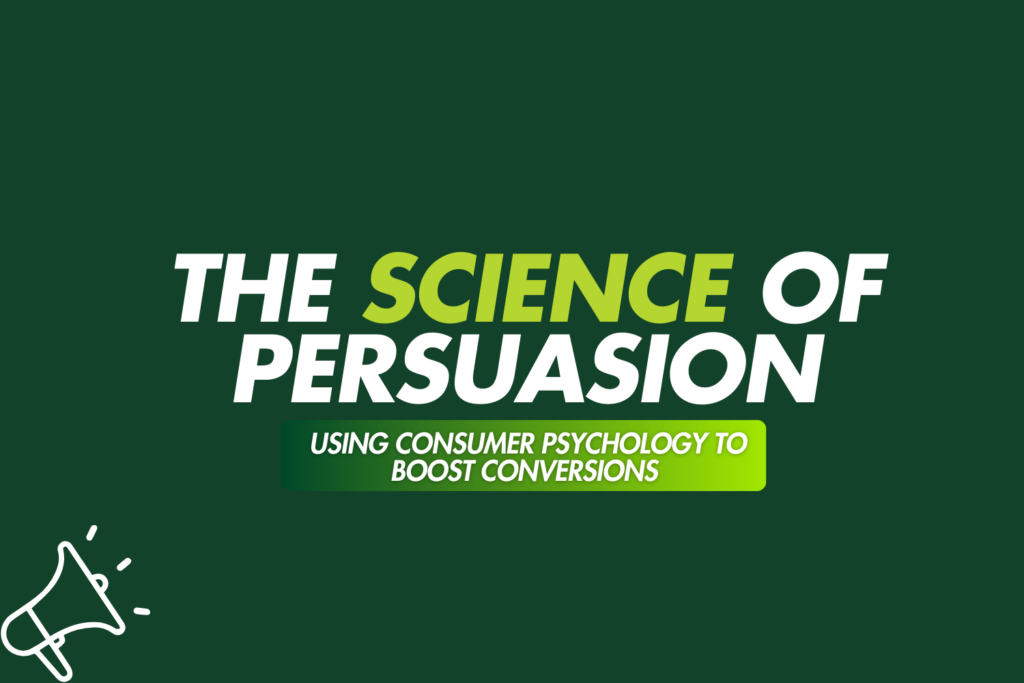Why are some websites effortless to interact with, but some websites turn visitors away as soon as they open them? Many have considered this question, and often, the answer is found in more than just what a website looks or feels like. True success is achieved when web design and marketing understand human psychology, embracing the art of persuasion to guide attention, evoke emotion, and drive action.
Web designers and marketers are not limited to designing digital spaces. They influence behavior, shaping decisions, and even manipulate actions, all of which users are most often unaware of. In a way, their roles almost match those of psychologists.
Science of Persuasion in Web Design
Every element on a page has the power to direct attention, stir emotion, and prompt action. The results can be incredible when these elements are built with an understanding of how people think and behave.
Some cases have shown that using psychology to improve a poor website can lead to an increase in conversions, from 0.3% to 6%. This is a very impressive increase of 1,900% leads, achieved not through changing an entire business model, but simply rethinking the way a website would interact with the mind. In another scenario, a company tripled revenue, over a million pounds more, just by tuning a funnel using psychological strategies. No new campaigns, no adjustments in the offer, just smarter user navigation through the entire journey.
Elevarus: Psychological Triggers That Boost Your Conversion Rate
Explains how psychological triggers—such as scarcity, social proof, authority, reciprocity, and commitment—directly impact conversion rates, often leading to significant increases in user action and sales.
In this blog post, we will explore the art of persuasion and how to use these bits of psychology to actually influence people’s behavior and improve results. We will also go through powerful ideas, real-world examples, and new ways of thinking about design, marketing, and everything else to turn interest into action.
1. The Foundation – Behavior as a Function of Environment
After grasping how powerful the relationship between design, marketing, psychology, and the art of persuasion becomes, it’s crucial to learn what actually brings them together. Why do visitors act as they do when they arrive on a website? Why do particular styles or messages encourage clicks, new sign-ups, or sales, whereas others fall flat? Interestingly, the environment around the decision plays a big part in the answer.

First off, this isn’t a new idea. In fact, it’s something that Kurt Lewin, who is often known as the father of social psychology, discovered. He came up with a simple and powerful idea: behavior is a function of who you are and what’s around you. B is the function in his equation of P and E. In short, it is a person’s behavioral reaction, based not only on who they are, but also on the environment that they have been placed into.
That idea alone is a fascinating path for web designers and marketers. Changing who a person is at their core can be almost impossible, but changing what they interact with is totally possible. That’s exactly the environment that designers are building on the screen.
From every button, every bit of text, every image and color choice, a digital universe emerges, guiding behavior or getting in its way. Looking back at the early example, massive jumps in conversions or revenue weren’t just lucky guesses. Rather, the digital environment was adjusted to better match how people think and respond, to be carefully shaped.
When someone visits a website, they enter a space crafted with the art of persuasion to influence what they’re going to do next. In a very real sense, designers are defining the universe for that visitor. Like in the physical world, the rules of that universe determine what people do. If someone clicks or scrolls, buys or leaves, it’s not just a function of their needs, but how the space around them—shaped by persuasive design—facilitates or steers these actions.

Are you interested in maximizing your online growth? We can help, Web Design, SEO, Brand, AI and Content Writing. Talk to Us! Call: (857)400-8959
2. Leveraging the Power of Social Proof
However, something even more fascinating is that the environment can influence behavior. Once this digital space has been thoughtfully designed with the art of persuasion in mind, the next question becomes how to lead people through this space. How can we support visitors to feel more confident in the choices they are about to make?
Among the most powerful answers to that question is something that people face almost every day without even realizing it: the quiet power of watching others. This very idea is known as social proof, and it indeed has an enormous impact on choice when someone feels confused or just swamped by options.
Social proof is the tendency to rely on others to guide oneself. . If many people are buying a product, leaving glowing reviews, or endorsing a service, that’s sending a signal—Telling others that the choice is probably a good one. Researchers call this underlying psychology informational social influence.

This opens a whole world of possibilities for web design and marketing. There are countless ways to get social proof: written customer reviews, star ratings, trust badges, expert endorsements and the list goes on. Just something as simple as showing how many people have bought an item or how many users are looking at the product, can make an incredible difference. These little signals tell the visitor they are not alone. Others have been here before, and they were happy with their decision.
Some strong statistics show how well social proof functions. Around 93 percent of consumers say reviews guide their buying decisions. On the product page itself, using customer reviews can help boost conversions by three times. Almost all B2B buyers say they are more likely to purchase when a trusted review is available. On Amazon, you can see reviews, ratings, alternative products, and a listing, all helping to create user confidence.
WiserNotify – Social Proof Statistics (2025)
- “93% of consumers say that online reviews impact their purchasing decisions.”
- “Displaying user-generated content on product pages can increase conversion rates by up to 166%.”
- “91% of consumers say reading online reviews is essential when making a purchase decision.”
- Read more
At the same time, using social proof means accepting a certain responsibility. It must be honest to succeed. Trust is formed through what people experience, not through what is invented for them. Creating fake reviews or saying things that appear too good to be true makes customers doubt a company, usually disproportionately. Rather, displaying truthful testimonials and honest statistics makes your marketing more impactful than just trying to convince someone. It gives your page authority.
3: Creating Urgency with Scarcity and Urgency
This fear is the real deal. Psychologists have looked into it and discovered that people actually have a much greater motivation to avoid losses than to go after gains. You could also say that losing something feels stronger than gaining something new. That’s why when a website posts a message saying there are a few left or an offer is ending soon, it leverages the art of persuasion—using loss aversion to grab attention and push visitors to act. All of a sudden, the mind shifts from curiosity to decision.

In the digital world, there are many ways this plays out. These flash sales, limited time discounts or checkout pages with countdown timers enforce urgency. People feel they must hurry, as if to think that it’s “Offer ends tonight’ or ‘Only two left in stock.’” For example, websites such as Booking.com might use this by displaying, for example, that a given hotel only has one or two rooms available. Similar is what Amazon does with low stock alerts. Even adding a simple clock counting down can change a person’s perspective of the present time.
These are certainly powerful strategies, but they have a responsibility. If you overuse them or use them and they aren’t true, they can be manipulative. It breaks trust if you tell someone there are only five items left when that’s not the case. Once trust is broken, even the cleverest of tactics will no longer work. The best thing is to be clear and honest. Get visitors to the correct information, with enough time and enough information to make confident decisions, but at the same time, nudge them to take action when necessary.
A good example of this is OptinMonster, which had a countdown timer in the special offer pop-up, indicating very clearly how much time was left. Attached to that were some real discounts. This creates urgency without pressure, and it feels more exciting and less stressful.
4: Shaping Perception with Anchoring
The way that social proof creates a comfort for people in other people’s choices and urgency drives action through limited time, anchoring is to their judgment of price and value. First, it starts with a straightforward idea. That number becomes my anchor if I see a $100 price tag first. Any subsequent numbers will feel lower or like more of a bargain. This is how the anchor sets the stage for determining everything else.
Anchoring works well, as most people rarely pay close attention to the price of a product. But the real focus is on comparison. If the same product begins at a high price and then goes on sale, the sale price will often appear like a bargain, despite being what the seller wanted to begin with.
Therefore, you’ll often find that online shops list the original price and the discounted price together. The first cost suggests that the new price is a sensible option.

The method works best when the anchor seems authentic. A trustworthy price gives the customer an idea of the product’s true value, so the discount appears more exciting. For instance, a website could share a product for sale at 2000 and then advertise it as only 1300. When the difference between products is right, customers start to trust the brand and move one step closer to buying. Another way to use this strategy is for brands to show and review several plans or packages. When you see a costly thing first, anything that comes after seems more reasonable and attractive.
Companies such as The Economist have found interesting approaches to utilize anchors. They offered three price points and ensured that their highest price was always close to their most affordable package to influence readers into picking the one they wanted. Because of this change, the number of conversions increased noticeably.
Like all psychological approaches, though, anchoring should be used wisely. An anchor price that feels like it’s made up of inflation for the sake of convincing the buyer to part ways can damage trust. You can tell people quickly when something doesn’t ring true. The trick is not to make an offer that’s tempting, but to make it seem fair.
Right anchoring is not misleading people. It’s to help them understand value through comparison. As with social proof which gives the user confidence and urgency which gives the user a reason to act now, anchoring gives the user clarity. It provides the mind something to hold on to and guides decisions.
5: Connecting Emotionally through Personalization
Personalization takes the idea of anchoring and magnifies how it affects what we think value means by focusing on an individual. Personalization is creating experiences that are made for each customer’s specific preferences or needs.
Now, with the term personalisation talk, the emotional aspect is relevant in a greater way. There are various reasons for purchasing: everyone has their own reason. Some want the solution quickly and others want the details. Some shop for logic, others buy to feel good. By understanding these emotional differences brands can connect much more deeply.

That’s where conversion rate optimization tools (CRO) come in. These tools enable brands to deliver the right message, content, or offer to the right person at the right time. For instance, social proof, which we talked about before, or a sense of urgency we mentioned in the previous section, these applications make every single interaction customizable.
They collect data about customer behavior and preferences and then use that data to build more personal, more meaningful experiences. It’s a win for the brand and the customer alike, making the journey quicker and more tailored to their needs.
But we must also remember that this power entails responsibility. Customers must trust that their data is being handled with utmost care and transparency. Respecting privacy and doing what is ethical is necessary to build trust and ensure that personalization feels dignified and noble. If done correctly, emotionally motivating personalization, nurtured by smart technology, can set brands apart, create loyalty, and build enduring bonds.

Are you interested in maximizing your online growth? We can help, Web Design, SEO, Brand, AI and Content Writing. Talk to Us! Call: (857)400-8959
Conclusion
By understanding how people think and behave and harnessing the art of persuasion, marketers and designers can create better online experiences. Using concepts such as social proof, scarcity, urgency, anchoring, and emotional personalization, they can prompt users to take action and strengthen the connection.
Now, these techniques should be used honestly and clearly enough that customers can make their own choices without feeling pushed. For anyone who wants to create websites or marketing that really work, it’s essential to know these psychological strategies inside and out.
Author Bio: Vidhatanard is the Founder and CEO of Fragmatic, a web personalization platform for B2B businesses. He specializes in advancing AI-driven personalization and is passionate about creating technologies that help businesses deliver meaningful digital experiences.
Stay connected
We’re always hard at work putting out new content covering WordPress, marketing, and SEO news. Stay connected with us 100% spam FREE.
We hope that you enjoy our content. If you decide to make a purchase after clicking on one of our affiliate links, we’ll earn a small commission at no extra cost to you. Thanks for reading! View our Affiliate Disclosure

